Intro

I got my pair for $145 USD. This is my first pair of Planar Magnetic aka Orthodynamic headphones, and my first crack at Fostex as a brand. Note the T50RP is the more popular semi-open variant. Fostex sells this same headphone in closed (T40RP) and open (T20RP) designs also. This is the MK3 (3rd gen) of the RP Series lineup, which has been around since the 80's. I have not owned other variants or previous generations of the T50RP, so I won't be able to comment on how this fairs against those. Although these headphones are heavily moded in the DIY community, I will only discuss the impact of a couple ear pad replacements. You can check the forums for other modifications. That being said, the review was compiled using the original ear pads for the sake of fairness and audio fidelity, being true to the way Fostex intended.
Anytime I get a new headphone I can't help but compare it with the others in my collection. So towards the end I will comment on how the T50RP MK3 faired against the following headphones I own:
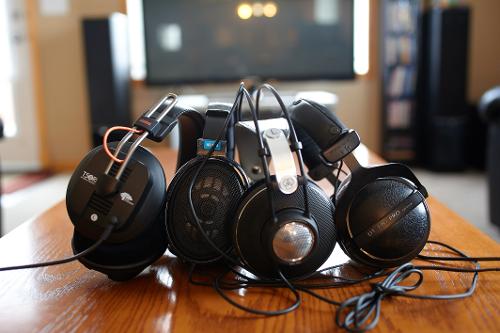
Sennheiser HD 600
Sennheiser HD 380 (not pictured)
AKG K612 Pro
Beyerdynamic DT 770 Pro (250Ohm)
I have published reviews for each of these. If your interested in knowing more about any of them checkout my other reviews. I decided to try something new this time. I got some unbiased "non-audiophile" friends and family members to "blind" test this headphone in comparison to the above headphones also, excluding the HD 380. They did not know their cost or any specifications about any of them. I let them choose the tracks they wanted to test with and gave them roughly 30-60 minutes to draw their own conclusions. This was not done in a controlled environment. It's completely unscientific, so take it with a grain of salt. Nevertheless, I did find the results interesting and thought people might find this informative. So I will include their feedback at the end of this review.
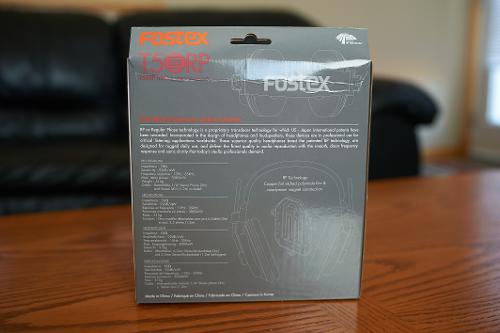
Like myself, many who are interested in this headphone will be looking at experiencing a planar for the first time, as this is one of the most affordable. There is a lot of misinformation regarding this technology out there. First of all, it's not new, it's been around since the inception of the loudspeaker. Despite some of the marketing garble floating around, dynamic drivers are not technologically inferior. There are some advantages of each, however the type of driver is only one small aspect. There are several other factors in the engineering, design, and implementation that all need to come together to achieve greatness. The best dynamic speakers can still outperform the best planars, and vice versa. So please don't think because someone has a planar that it's automatically superior to any dynamic driver. Like anything else, let YOUR ears be the judge of that.
My Setup

In testing I used the TEAC UD-H01 32bit DAC connected via USB to my Windows 7 desktop. Then line out from the TEAC with RCA (full 2.0V RMS) to my SMSL SAP III amp. I use the foobar2000 player with EQ off playing various files from FLAC to m4a to mp3 (VBR/CBR 320). In terms of sound signature preferences I like more mid centric headphones with tight, accurate bass (quality over quantity). I frequently have long listening sessions and I do get irritated by sibilance on certain bright headphones like the DT 990. This is because I have quite sensitive hearing. I listen at much lower levels than anyone else I know. In terms of musical tastes, I enjoy all genres of music spanning across many different era's. But I have a soft spot for singer/songwriters with gifted vocals.
Design/Build (7/10)

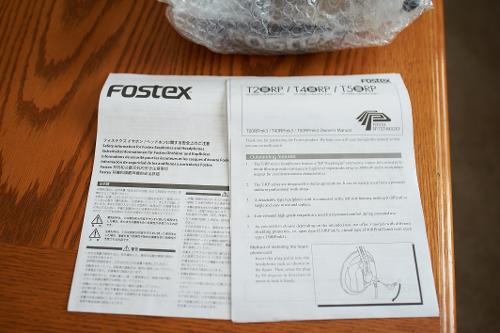
It comes in a modest cardboard box, with two cables included. A black 10FT 6.5mm, and an orange 4FT 3.5mm. Other than a warranty card and spec sheet nothing else is included. Upon removing the headphone from its bubble wrap baggy I was pleasantly surprised by the large size and lightweight design (315g). It feels solid in the hand. Plastics are of good quality. The headband is faux leather but higher than average quality, with generous padding and large Fostex branding on the outside.
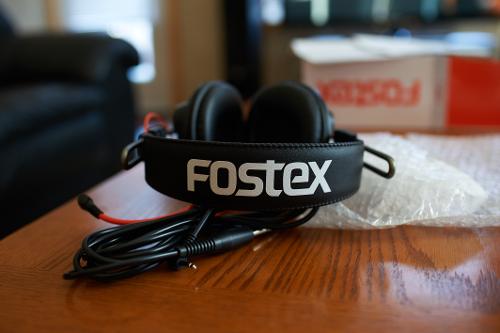
The metal posts forming the adjustable headband stand out with their gun metal like finish. It's not steel, it's some sort of reinforced aluminum alloy. It feels strong and solid. The drivers slide up and down the posts for adjustment. The range of adjustment is very large. It should fit just about anyone, from children to adults. However, there are no markings at all, so it's more challenging to get both sides adjusted the same. To make things worse there are no clear "clicks" in adjustment. So after proper adjustment, it is possible for it to move on you over time during daily use. The plastic parts are securely fastened with screws, nothing is loose, everything feels solid. The orange braided wires are clearly visible going from the headband to each driver. The cups are vented on the outside and have a good range of articulation in all directions. It's like they pivot on a ball joint. It's the first headphone I've seen with this design and I really like it.

Right and left are clearly marked. The 3.5mm terminal with proprietary locking mechanism is located on the left, making it easy to tell which side is which in the dark. The included cables are of average quality, nothing too impressive. But at least they included two for the most common uses, portable and studio/home. Simply plug them in and turn 90 degrees to lock them in securely. I did find the 1/4 inch terminal on the 10FT cable to be a bit bulkier than normal, but had no issues with it fitting in any of my amps. I was happy with them and see no pressing reason beyond aesthetics to replace them. However, any 3.5mm cable should fit, it just won't make use of the locking mechanism. So cable replacement options are plentiful if that's your thing.
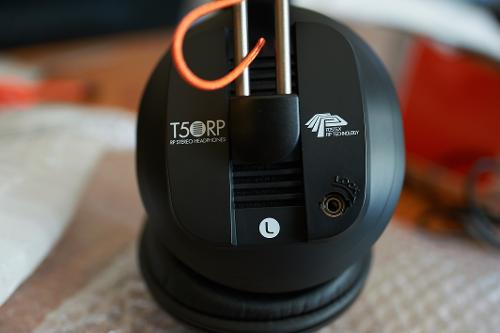
These are large semi-open headphones. They lack portability, and the isolation of closed-back options. Very few portable devices have enough power to drive these. They really are made for studio or home use only, however they can take a lot of abuse if you plan to travel with them. The design is very modular and parts are readily available, which is a plus. Style wise they are all business. It's clearly function over style with these. But they do conform very well to the contours of the head. So they don't look as obnoxious as some other pro level cans. You just won't be winning any popularity contests with it.


The ear pads are a complete disappointment. The pleather material and foam padding screams average. To make things worse they made the pads very thin. Despite being full-size there is little room for the ears to fit inside the pads. So it feels like more of an on-ear design. As someone who wears glasses, this was unacceptable. Fostex, what were you thinking? Let's ruin an otherwise very well designed headphone with some "flapjacks" for ear pads? Well, that’s what they did. Anyone who considers this headphone should be prepared to replace the ear pads. I will cover ear pad replacement options in the next section.

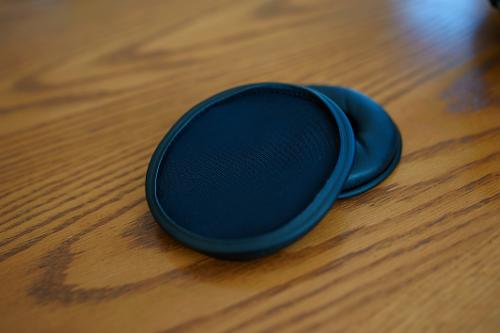
The ear pads wrap around in a groove cutout around the drivers. The pads simply pull off. Upon removing the pads, you see a removable piece of foam dampening around the driver. Interestingly, the square drivers are rotated 45 degrees inside the cups. There is a cloth mesh material glued to the metal drivers also.

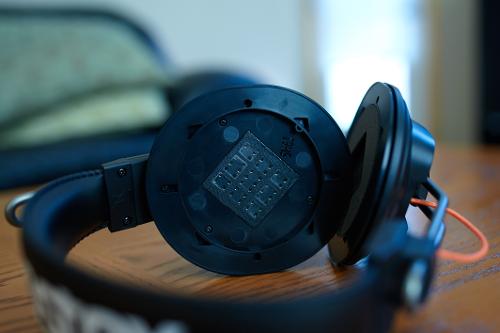
Overall for the design I have to give it 7/10, knocking it mostly for the ear pads. And I would have preferred a "clickable" adjustment that has much less chance of moving on me.
Comfort (4/10)

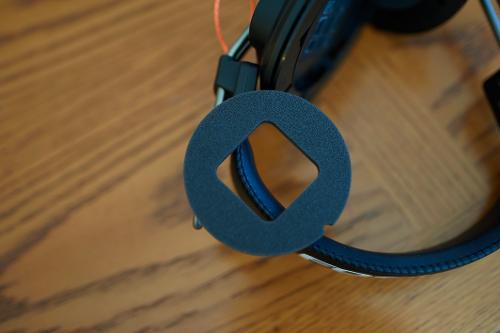
I would put the clamping force as moderate. You will feel it but it's not strong. Comfort on the top of the head is fantastic. It's generously padded and contours very well, no hotspots at all. It did take a little work to adjust properly and find a good seal, but it feels secure on the head when you do. After a couple hours it did get warm. Beyond a couple hours I needed to take the pressure off a bit. I felt some discomfort on the top of my ears around where my glasses sit. This is due to the lack of padding on the ear pads, and the fact my ears would not fit completely inside them, or at least it felt that way. In addition, I found myself constantly moving them around, it just felt like work to keep the right seal and comfort.

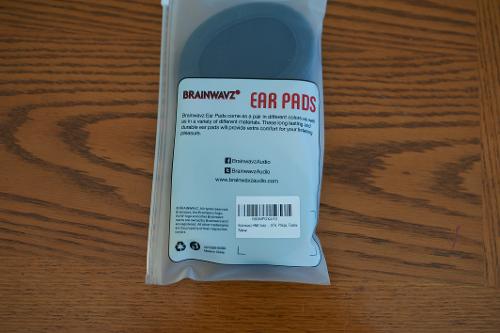
Needless to say, I did replace them. Thankfully, it was simple, affordable, and resolved all the comfort issues. I ended up going with the Brainwavz HM5 Velor Memory Foam pads ($20-30 on amazon). This is a good budget option. The more premium option is to go with the Shure 1540 replacement pads (HPAEC1540) which are also memory foam but use high end alcantara fabric. At my time of purchase they were hard to find, and about 3 times the price of the Brainwavz pads. The velour on the Brainwavz is not as velvety smooth as those on genuine Beyerdynamic or Sennheiser headphones I own. The memory foam is great though, I am happy with them, especially for the price.


It did take some flexing and massaging of the new pads to get them to fit around the groove. But once you get them in, it's a nice snug fit. I had no problems with the pads moving around after installation. You might be thinking of the acoustic effect of changing ear pads. I did do quite a bit of research myself before deciding on my set. Basically, stay away from angled pads, or very thick ones. Don't go any thicker than the ones I suggested. You don't want your ears too much further away, otherwise it becomes overly bright with reduced bass response. Memory foam seems to be preferred because of the higher damping factor (more dense, less leakage) over traditional foam. It also happens to be more comfortable. In terms of the fabric, cloths like velour won't provide as much seal as pleather like material. This can have the effect of reduced bass response. However, I found this to be negligible, if at all perceptible. Alcantara is the best of both worlds, offering better seal than velour while maintaining the same, if not higher level of comfort. Thankfully we can fix what Fostex did, but we shouldn't have to. I have to rate them based on what Fostex gave us. So it's a 4/10 here.
Sound (9/10)
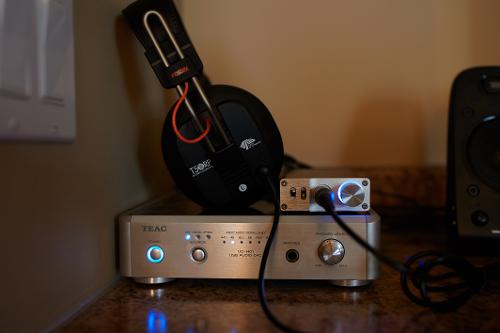
Before I get into how this headphone performs, people need to understand how much power it requires. Orthodynamic drivers are known for being difficult to drive. This one is no exception. The T50RP requires the most power of any headphone I have. In my setup, it requires about 20-30% more power than the HD 600. That being said, I can drive them from moderate to ear bleeding levels at 10 to 11 o'clock on the volume knob. Some listening to these on my setup were pushing it as high as 2 o'clock. My SMSL SAP III is a budget amp ($70). But it's one of the most powerful under $100. So you don't need to spend a fortune, but you definitely need something powerful. I tried driving them directly from my TEAC, which has a decent 40mw RMS at 32 Ohm. It could barely run them at moderate levels at 2 o'clock. This is the only headphone I have which the TEAC can't drive on its own. Frankly, I had no need for my SMSL until I got the T50RP.
Note that in my setup the TEAC DAC and SMSL amp are independently powered, the SMSL is getting a full 2.0V RMS line input from the TEAC. This is rarely the case when using a DAC/AMP combination unit. The internal DAC rarely outputs a full 2.0V before going into the amp section. Meaning the amp needs to do much more work. It's best to go with powered standalone DAC and amp units for several reasons, this is one of them. Avoid USB powered DAC's or amps. USB powered DACs with very few exceptions will not output 2.0V RMS. USB powered amps just don't have the juice. Avoid portable amps, only the most powerful ones have a shot at driving these, and cost several times more than something like my SMSL.

There is a moderate level of isolation but not enough to use in a noisy environment. Sound leakage is minimal. You can get away with work environments at low to moderate levels without bothering people around you. I did not notice any major changes before or after 50+ hours of burn-in. I like to try and summarize a headphones sound signature in a few words. I would say this one is spacious and agile. A very engaging, high energy can. Soundstage and separation was the first thing that surprised me when I put these on. I did find myself turning my head to identify if that "noise" was coming from somewhere in the house at times. Instruments are clearly defined in their own space relative to one another and the vocalist(s). The imaging is fantastic, ideal for mixing and monitoring applications.
The treble is very detailed and transparent, it picks up all the little nuances. It is also analytical and will pick up any imperfections perfectly. Which is what you want in a monitoring headphone. Highs are very well extended all the way up to 35Khz. I did find the high's to be slightly more forward than the mid-range. Instruments are presented with authority. So vocals took a step back, until they reached the upper range, like in strong rock or female vocals. Initially I found the treble to be a little harsh on certain tracks at high volume. But it never became sibilant. It was not a problem at moderate volumes, and eventually I did get used to it. I found that the T50RP was actually revealing some distortion in the upper range on certain songs. So I can't really fault it for that. Just be warned this headphone will reveal any slight errors in a recording and make them glaringly obvious. If you experience harshness or even sibilance, it's likely your source. Nevertheless, I would still say the highs are more prevalent over the mid-range.
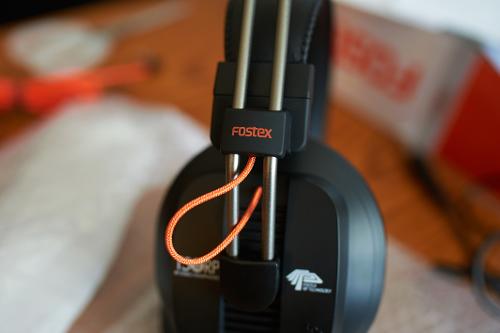
Despite the well extended, forward highs, they never bled into the mid-range. And because of the fantastic separation, the mids are still very well defined in the presentation. They just aren't as present as I am used to on warmer headphones like the HD 600. It's as if the artist moved the mic a few inches away from their mouth. The mids still have every bit of depth and detail though, and I did find them pleasing. Especially when the track would settle down. It's likely the way the tracks were mixed though. The HD 600 is doing something to bring the vocals out more, and rolling off on the high end. So the T50RP is the more neutral of the two, and likely more honest to the original.
Bass response is another area that surprised me about this headphone. This is usually a strong point for dynamic drivers. It's so well defined amidst the rest of the track. It's very quick, accurate, and hits with authority when the track calls for it. There is an area in the sub-bass that the HD 600 just doesn't dare go. And the Fostex does it effortlessly. There is a definition to the bass that you miss on the HD 600. Even compared to the DT 770, bass impact was more substantial on the T50RP. It was more extended and defined. Even those bass heads among us will be pleased with the bass on the T50RP. But it's not the "boomy" type of bass most are used to on dynamic drivers. The impressive part is that Fostex manages this exquisite bass extension without bleeding into the mids at all. It never sounds muddy, even at dangerously high volumes. I attribute that in part to the excellent soundstage and separation. The only headphone which gave me as nice of an experience with bass response would be the HiFiMan HE-400 (older model without the "i" or "S").

Overall the sound signature Fostex delivered is on point. It's like an athlete who manages to display tremendous strength, but does it gracefully and effortlessly. There is no real weak point in the performance. It manages to present a very close to neutral signature with slightly elevated treble, which most will really enjoy. I consider myself sensitive to treble, I never could get used to the DT 990 in this regard. The T50RP was just at the limit of what I could withstand at high volume, but at normal listening levels deemed safe for extended periods, it yielded a very enjoyable experience. One that will have me holding onto these for many years to come. I give it a fantastic 9/10 for overall audio fidelity.
Verdict (8/10)
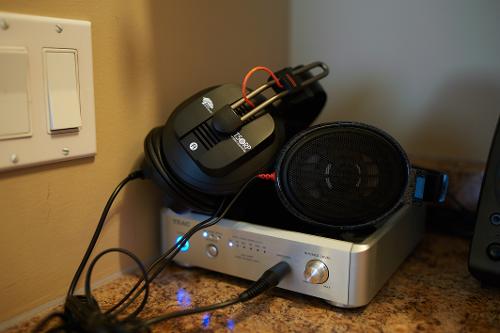
The T50RP MK3 is an interesting headphone. It has great potential and offers a lot for its asking price. But it's clearly not perfect. If it was, it wouldn't be moded so heavily by the DIY community. Many of the comfort issues can be addressed by experimenting with ear pads. You may have to invest into decent amplification. Those who do so will be happy with their purchase. But let's be honest here, most consumers have no interest in modifying the headphone to "improve" upon what they already paid the manufacturer to do for them. If your someone who is not willing to deal with these things, there are several other contenders in or even below this price range. The AKG K612 Pro is a great open-back option, and the closed-back Sennheiser HD 380 Pro is fantastic too. Either of those would be a much easier recommendation for the majority of people.
If you are unlike the majority of people and like the idea of experimenting with mods and amplification, then, and only then, I am comfortable in recommending this headphone. Just be ready to spend some more time and money on it. So with the new ear pads does it dethrone my HD 600? The superior comfort and magical mid-range of the HD 600 still has me going back to it every time. But the T50RP's soundstage and bass response is so good I just can't let them go.
Comparison and User Feedback
Below is how I ranked the headphones from best to worst in each category.
- Mids/Vocals (HD600,K612,HD380,DT770+T50RP tied)
- Bass Response (T50RP,HD380,DT770,HD600,K612)
- Soundstage/Imaging (T50RP,K612,HD600,HD380,DT770)
- Highs (T50RP,HD600,K612,HD380,DT770)
- Transparency/Detail (T50RP,HD600,K612,DT770+HD380 tied)
- Neutrality (K612,T50RP,HD600,HD380,DT770)
- Isolation (HD380,DT770,T50RP,K612,HD600)
- Comfort (HD600,K612,DT770,HD380,T50RP) /w ear pad mod T50RP moves ahead of HD380
- Materials/Craftsmanship (DT770,T50RP,HD600,HD380,K612)
- Style (HD600,DT770,T50RP,HD380,K612)
- Value (K612,HD380,T50RP,DT770,HD600)
- Overall Audio Fidelity (HD600,T50RP,K612,HD380,DT770)
- My Favorite (HD600,T50RP,DT770,K612,HD380)
That pretty much summarizes it. I still prefer the HD 600 overall. But the T50RP edged out every other headphone I have. Despite being on the tail end of audio fidelity, the DT770 still ranks high up there because of it's versatility, having good isolation, amazing comfort, and great build. Honestly, all of them are perfectly adept for studio monitoring and home listening alike. They are all great in their own right, and I can't imagine anyone would be disappointed with any of them. There is a reason I have kept all of them.

Below I will summarize the feedback I got from the "non-audiophile" test results. I have paraphrased what they told me into more technical terms for clarity. I will show their overall favorite from best to worst like above. The HD 380 was not part of this test. They used the T50RP MK3 with the Brainwavz velour memory foam ear pads, not originals.
Anna (29 year old female and family friend)
- Favorite (T50RP,HD600,DT770,K612). Said the T50RP had the best bass and was easier to hear things in the distance.
Joseph (30 year old male and brother-in-law)
- Favorite (HD600,DT770,T50RP,K612). Said vocals sounded "louder" and "clearer" on the HD 600. He liked that he did not need to increase volume as much to hear the vocals well on the HD 600. He picked the DT770 over the T50RP because of the build and comfort of the DT770.
Janeth (my wife)
- Favorite (HD600,K612,T50RP,DT770). Said similar to Joseph, liked vocals on the HD 600. Found the vocals better on the K612 over the T50RP also, in addition to added comfort. Liked the bass on the T50RP over the DT770.
As you can see, what people will prefer depends largely on what they prioritize. But hopefully you found this review and information helpful in making your own decision. If you did, please mark it helpful so others will see it too. Whatever you choose, I hope you love it. Happy listening!




























